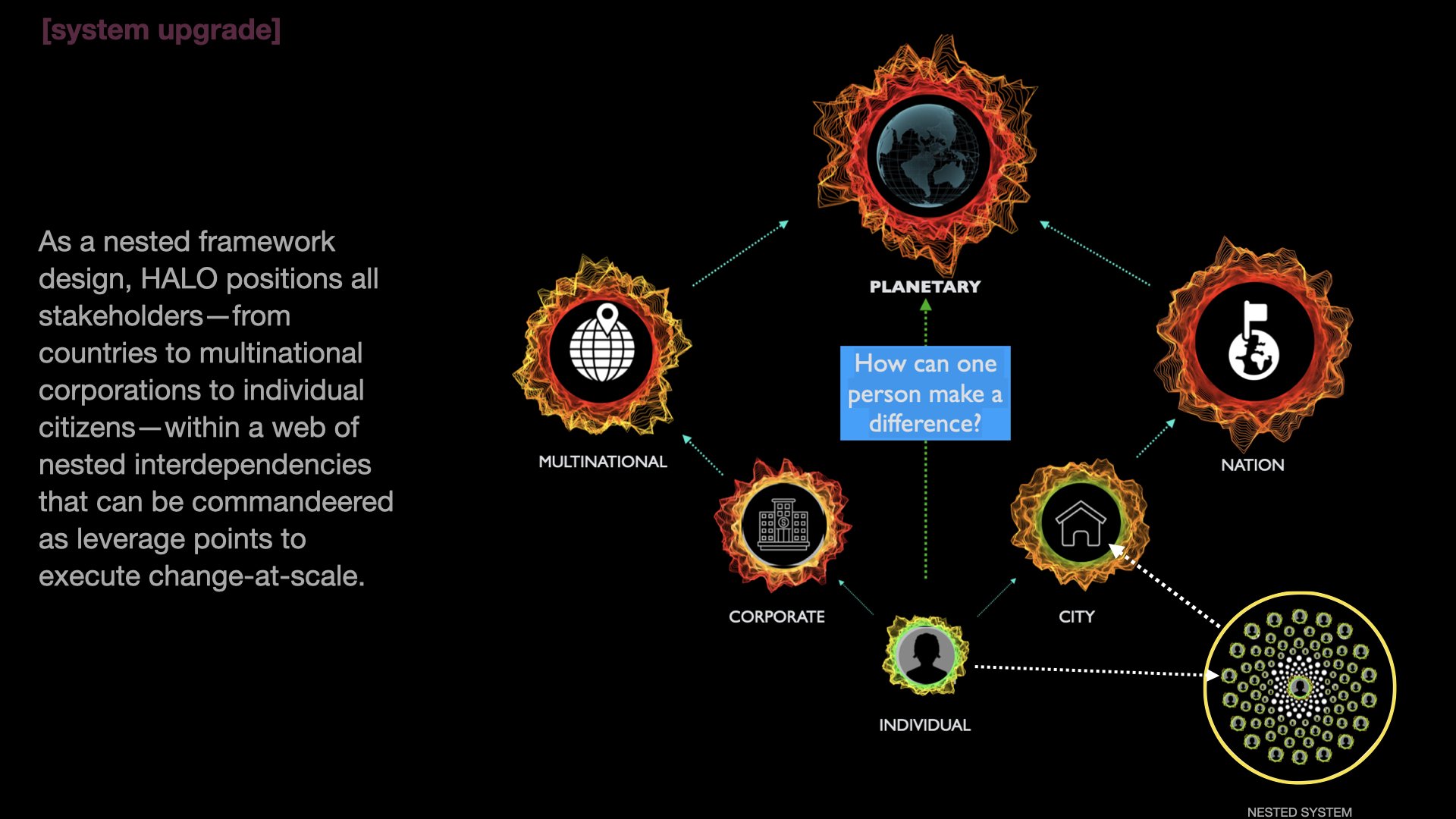We are on a mission to evolve our current earth status alerts from traditional analog visualizations to a generative, 'live-signaling' system that is more representative of and responsive to the biosphere and its emergent dynamics.
The Planetary Boundaries are published annually as a static graphic on the SRC website.
To do so will require buy-in from environmental scientists who govern the go-to data models. But there hasn’t been much of an incentive to upgrade, until…
In their January paper, the Rockström group - who manage the Planetary Boundaries - called for a new global governance system to address the urgent demands of the Anthropocene epoch.
Specifically, through the activation of scalar ‘nests’ that interoperate across local, regional, and global scales; establishing a dedicated global human response network for our most urgent environmental directives.
The ‘operationalizing’ of scalar nests in service of ecological imperatives is a critical need that will require a long-overdue computational solution.
That’s where generative design comes in.
When a static system visualization is upgraded to a generative one, it becomes a ‘live’ holistic composite of all the subsidiary or nested systems that comprise it. On a network level, this means that stakeholders across global scales can be digitally tethered to the signal. And thus can directly impact the signal through interventions that register immediately as a live feedback loop.
A proven force multiplier for engagement and behavior change.
In the video above, we explore how the Planetary Boundaries could be seamlessly upgraded to a generative visualization that live-signals earth systems status, meeting several objectives outlined in the Rockstrōm paper and representing a quantum shift in how we ‘see’ and govern human-ecospheric equilibrium.
addenda:
Generative Design: A Primer
For those new to the field: generative, or computational, design involves writing algorithms that process data into digital patterns and objects. In the case of environmental systems, this means the processing of complex multi-contextual data flows into a composite, holistic signal.
Planetary Boundaries broken into categorical inputs and processed into a generative signal of the holistic system.
No longer a mere visual, the generative signal is the live expression of its nested scalar (ecosystemic) inputs.
More importantly - and in direct response to the call by Rockstrōm et al. for immediate multi-scalar collective action - generatives by their nature produce a live feedback loop of any interventions by stakeholders - individual or collective - logged on instruments tethered to the module.
Thus when we evolve a 2D static alert to a multidimensional dynamic signal, the the signal becomes the system. It is the literal and figurative expression of every (living) data set that comprises it, including humans and corporations.
And directly responsive to any change made at any scale or jurisdiction within it.
Here we see Ocean Acidification, one of the nine Planetary Boundaries, in a generative configuration with a sample of its generating subsystems, and as a generating subsystem of the holistic Planetary signal. Interdependent and interoperable - generative signals update dynamically and can direct stakeholders to interventions that will move the needle on higher order system status.
Here we see Target’s corporate ESG in a generative framework. One of the second-tier drivers of ESG is Carbon Footprint, which in turn is driven by a vast inventory of subsidiary nests, a sample of which are pictured. Generative systems provide actionable intelligence to stakeholders by directing interventions toward levers that can register immediate improvements within the master signal.
This is the power of generative design and implementing a live-signal of earth systems is our next evolutionary leap
As can tell, we are very passionate about upgrading our current 2D static models to generative. Up-coding the Boundaries would be the ideal fast-track for this critical global implementation. Hence the pitch for our generative HALO signal as a plug-n-play upgrade of Rockström’s module that would address key directives of their paper. [video above]
Thank you for reading.
…
addenda:
How feedback loops can drive change-at-scale, explained here.
The slides below highlight the power of mechanized scalar nests;
A mock dashboard for worldly.io - a leader in providing corporate supply chain compliance intel. Here we see three generative signals of corporate ESG for Al-Karam, Prosperity Textile, and Xerox with a sample of ESG drivers. When the world moves to a standardized generative platform for earth systems signaling, each component driver becomes a signal of its own, and a direct portal for action.
What’s stopping us?
…
If you have questions or comments, we’re always up for engaging. Email us at info [at] ora [dot] systems.










